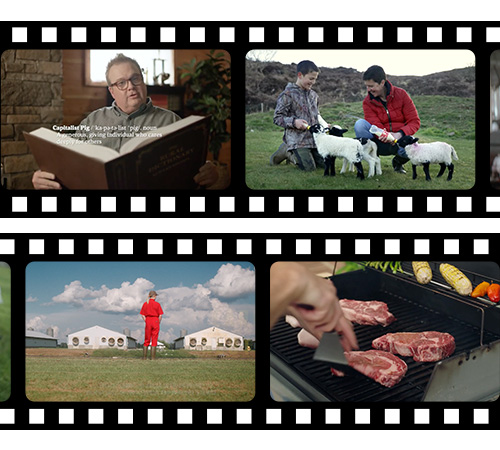But storytelling is evolving. It is becoming less about the product and more about the connection, the emotions evoked, the relevance to the topics of today. A great example is this Nike ad and the inspiring way it showcases athletes. But make no mistake; it’s not only about creating “all the feels” – this ad inspired a $297m year on year revenue increase1, without a single mention of the product.
Today it is harder to own a product-differentiated competitive advantage. This is where stories make the difference. By connecting with the target customer, stories give brands value and meaning. Stories impact how we as consumers feel about things.
Not surprisingly, video is leading the way with storytelling. With brand messaging no longer restricted to 15-, 30- or 60-second ads, videos can capture the full story then be cut, curated and promoted via multiple platforms, all driving traffic to your website for a more complete picture of your brand.
For the meat industry, video has the potential to make a huge impact on how we tell our story. Many of our consumers want to know how animals are raised or understand the measures used to trace products from farm to fork. Video helps us show this to those who don’t have everyday access to the environments where animals are raised and processed.
Many of you already are capitalizing on video. But too often those of us in the industry try to create the prettiest picture possible. It is time to set that mindset aside. Our consumers, especially Gen Zs, aren’t interested in polished, staged messages. They are looking for authentic stories, especially when we talk about animal welfare and sustainability.
Here are some video stories I have seen recently that deserve attaboys for getting it right:
- National Pork Board’s The Rural Dictionary with Eric Stonestreet
- Mowi telling its story through the voices of its team members
- U.S. Farmers and Ranchers Alliance’s short film on the vision of carbon neutral pigs
- Tyson Fresh Meats’ Open Prairie Natural Meats sharing the brand’s Openness Promise (full disclosure: this was developed by our team)

We also must remember that storytelling can work against us. This video is an example of how the competition is saying a lot in a short amount of time to sell their plants as burgers. Both Impossible Foods and Beyond Meat have more than doubled their marketing spend in 20212 and a lot of that is focused on the digital space. Why would they double their efforts? To steal market share since both trial and repeat purchases showed signs of slowing in the first half of this year.3
If your role includes signing off on your company’s marketing plans for next year, here are three questions to ask before you give it your stamp of approval:
- How are we telling our brand story?
- Who else will be helping us tell this story?
- How are we utilizing video to tell our story?
If you aren’t satisfied with the answers, push for changes that will ensure you tell your brand story in powerful and engaging ways that truly connect with today’s meat eaters.
2 Kantar Ad Insights
3 IRI, Integrated Fresh HH Panel All outlets Combined and Integrated Fresh POS, MULO 26-weeks ending 7/11/21
This content originally appeared in Meatingplace.
